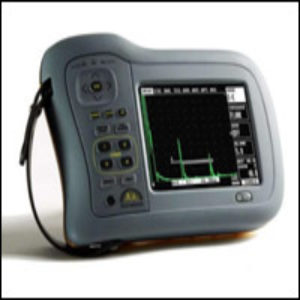Ultrasonic inspection uses sound waves of short wavelength and high frequency to detect flaws or measure material thickness. It is used to test welds, castings and wrought products, e.g. rolled plate or forgings. Manual and immersion techniques are employed.
Manual testing involves sound waves (pulsed beams of high frequency ultrasound) transmitted via a hand-held transducer, which is placed on the specimen. A ‘couplant’ is used to enable the sound to pass from the transducer to the component under test. Any sound from the pulse that returns to the transducer (echo) is shown on a screen, which gives the amplitude of the pulse and the time taken to return to the transducer. Flaws anywhere through the specimen thickness reflect the sound back to the transducer. Flaw size, distance and reflectivity can be interpreted.
The immersion technique involves placing the component in a tank of water and passing the sound waves through the water into the component.
Because of its complexity considerable technician training and skill is required.




